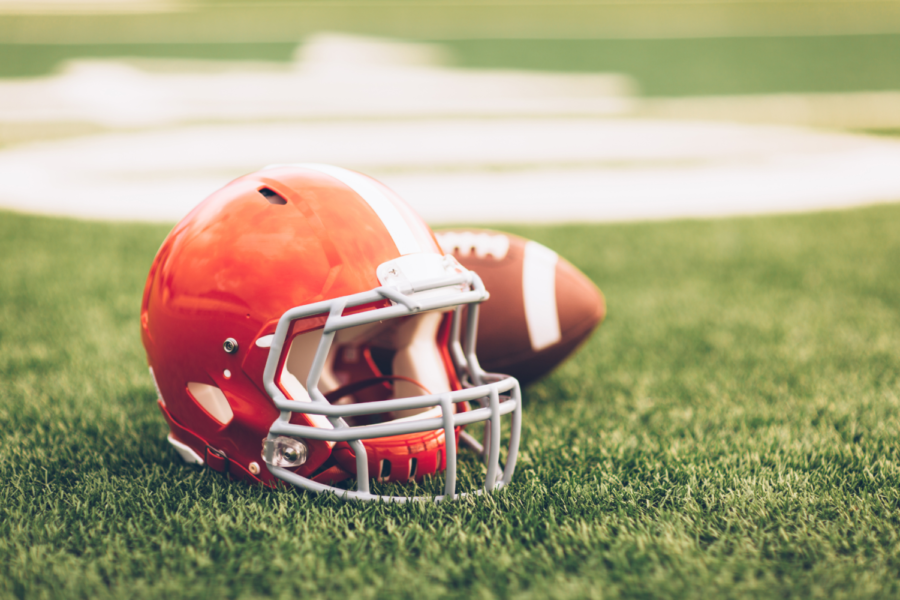The NFL’s Current Concussion Protocol Does Not Work
November 2, 2022
On the heels of the NFL’s and the NFL Players Association’s investigations into the Miami Dolphins’ handling of Quarterback Tua Tagovailoa’s apparent concussion, the NFL has modified its concussion protocol.
Although the investigations found no wrongdoing by the Dolphins, the brutal image of Tagovailoa’s body and hands seizing up live on Thursday Night Football prompted the NFL to amend its concussion protocol.
The updated protocol states that any player with a clear visible impairment will not be allowed to return to a game. These changes might have helped Tagovailoa, but the updated protocol still presents some issues.
The NFLPA developed and urged the NFL to adopt these changes to the concussion protocol and to have them implemented immediately.
“Our union has agreed to change the concussion protocols to protect players from returning to play in the case of any similar incident to what we saw on September 25,” the NFLPA said in a statement. “We would like these changes to go into effect before this weekend’s games to immediately protect the players and hope the NFL accepts the changes before then as well.”
The protocol still relies on players speaking up and self-reporting any concussion symptoms. Not all concussions are accompanied by visible signs and for the most part, players do not want to come off the field so they might try to conceal that they are suffering from symptoms.
Unlike other professional sports leagues, such as the NBA and MLB, the NFL does not have guaranteed contracts. The problem is that often a player’s job and livelihood is on the line if they come out of a game due to a concussion. Fringe players that are not superstars may be less likely to report a concussion because it can result in them losing their spot in the starting lineup if another player comes in and performs well.
With technological advancements being made to diagnose head injuries, the NFL still relies on assessment tests that players take prior to the start of the season. If a player is suspected of having suffering a concussion, these assessment tests are given again to compare results with the pre-season control test.
Prominent players such as Peyton Manning have opened up about the ineffectiveness of the assessment tests. A few years ago, Manning told ESPN that he would try to cheat the system to avoid being taken out of a game due to a concussion.
“They have these new tests we have to take before the season. Then, after a concussion, you take the same test and if you do worse than you did on the first test, you can’t play. So, I just try to do badly on the first test,” Manning said.
On a podcast with ESPN’s Pablo Torre, former Kansas City Chiefs and San Francisco 49ers Quarterback Alex Smith stated that while playing for the Chiefs, he was able to game the system despite losing consciousness on the field.
“I’m out on the field for a short period of time, a very small period of time and come to with a bunch of trainers and people all over around me,” Smith said. “And for me, at that point, a rush of emotion. You’re pissed at yourself, to be honest, that it happened, that I let it happen.”
Smith’s comments point to players’ unwillingness to come out of a game for fear of losing their spot. Smith had previously lost his job with the 49ers to Colin Kaepernick and his stint with the Chiefs was his last shot to be a starting quarterback in the NFL, so he did not want to lose playing time.
Smith ultimately beat the concussion protocol despite being briefly knocked out cold and remembers trainers making light of the situation afterwards.
“I even remember our head trainer like laughing about it like, ‘The concussion that you didn’t have.’ Like everybody knew it, like it happened,” Smith said. “Obviously the entrance into the protocol was imperfect, and still is, but I kind of slipped out this side door.”
Despite passing the protocol, Chiefs Head Coach Andy Reid decided to remove Smith from the game. While at the time Smith was angry about having to leave the game, he said that in retrospect he was thankful that Reid took him out the game and sat him the following week.
“And I’m thankful for him for that, along with our trainer and doctors that all made great decisions. Again, for me at a point when I was still symptom-free, passing tests and moving along and feel like, ‘Hey, let’s go.’ And so, I sat a week and thankfully,” Smith said. “I’ve never had another incident the rest of my career. So, I’m sure if you look at my medical records, technically, I probably only had one official concussion in the eyes of the NFL.”
Not all coaches would have the wherewithal to remove and sit a player that passed the concussion protocol. Most coaches do not have the resume and job security that Coach Reid has. Most coaches are perpetually in the hot seat. So it is hard to say that they would be able to make the decision to remove and sit their starting quarterback, despite beating the protocol.
The modified concussion protocol is a step in the right direction, but it still has issues. Until the NFL begins to adopt more advanced techniques to diagnose concussions, there will still be loopholes for players to use to beat the test.





